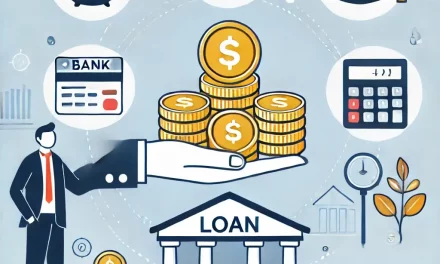Compound interest is often referred to as the “eighth wonder of the world,” a phrase attributed to Albert Einstein. Whether you’re saving for retirement, building an emergency fund, or investing in the stock market, understanding how compound interest works can make a significant difference in achieving your financial goals.
What is Compound Interest?
Compound interest is the process where the interest earned on an initial investment or savings also earns interest over time. Unlike simple interest, which is calculated only on the principal amount, compound interest allows your wealth to grow exponentially by reinvesting earnings.
Formula for Compound Interest
The basic formula for calculating compound interest is:
A=P(1+r/n)ⁿᵗ
Where:
- A = Future Value of the investment/savings
- P = Principal amount
- r = Annual interest rate (in decimal form)
- n = Number of times interest is compounded per year
- t = Time in years
The Power of Compounding: Why Time Matters
One of the most important aspects of compound interest is time. The longer you let your money grow, the more significant the effect of compounding becomes. Here’s a comparison:
- Person A starts investing $500 per month at age 25 and stops at 35, with an annual return of 7%.
- Person B starts investing $500 per month at age 35 and continues until 55 with the same return.
Despite Person A investing for only 10 years, they often end up with more wealth than Person B due to the early start and compounding.
Compound Interest in Savings Accounts
High-Yield Savings Accounts
A high-yield savings account is an excellent example of compound interest at work. These accounts, offered by online banks and financial institutions, often provide higher interest rates than traditional savings accounts. Make sure to compare APY (Annual Percentage Yield) rates to maximize returns.
Certificates of Deposit (CDs)
Certificates of Deposit are another popular savings option. CDs typically offer fixed interest rates for a specified period. They are ideal for risk-averse investors looking for stable returns.
Compound Interest in Investments
Stock Market Investments
Investing in stocks allows you to benefit from compound interest through dividends and capital gains reinvestment. Over the long term, the S&P 500 Index, a benchmark for U.S. stocks, has shown an average annual return of about 10%, making it an attractive option for compounding growth.
Mutual Funds and ETFs
Mutual funds and ETFs (Exchange-Traded Funds) are diversified investment vehicles that reinvest dividends and capital gains, enabling compounding. Look for funds with low expense ratios to ensure a higher net return.
Avoiding Pitfalls: High-Interest Debt
While compound interest can work wonders for savings and investments, it can also work against you when it comes to high-interest debt, such as credit card balances and personal loans. In these cases, compounding increases the amount owed, leading to a debt spiral if not managed effectively.
Practical Tips to Leverage Compound Interest
- Start Early: Even small contributions grow significantly over time.
- Contribute Regularly: Set up automatic contributions to savings or investment accounts.
- Reinvest Earnings: Always reinvest dividends or interest to maximize compounding.
- Choose the Right Accounts: Opt for tax-advantaged accounts like 401(k)s, IRAs, or Roth IRAs to compound your savings while minimizing tax burdens.
Conclusion: Building Wealth with Compound Interest
Compound interest is a powerful tool for growing your wealth. Whether you’re saving for short-term goals or planning long-term financial security, leveraging the principles of compounding can help you make the most of your money. By starting early, investing consistently, and avoiding high-interest debt, you can set yourself on a path toward financial independence.






I’m writing to make you be aware of of the excellent experience my cousin’s princess enjoyed studying the blog. She figured out such a lot of things, not to mention how it is like to possess a very effective coaching character to have many others without problems comprehend specified specialized matters. You undoubtedly exceeded visitors’ desires. Thanks for coming up with those productive, trusted, revealing not to mention easy thoughts on the topic to Ethel.
how effective are steroids
References:
types anabolic steroids (ansgildied.com)
steroid effects on females
References:
Is There Legal Steroids (https://Niqnok.Com/)
Thank you for any other informative blog. Where else may I am getting that kind of information written in such a perfect means? I’ve a undertaking that I’m simply now working on, and I have been at the look out for such info.
kidsvisitor
J’adore l’energie de DBosses, ca donne un frisson inegale. La selection de jeux est grandiose, avec des slots modernes et immersifs. Le support est disponible 24/7, avec une aide personnalisee. Le processus est clair et sans complications, de temps a autre des recompenses supplementaires seraient bienvenues. Pour conclure, DBosses offre une experience inoubliable pour les amateurs de casino en ligne ! En plus la navigation est intuitive et rapide, facilite une immersion totale.
dbosses casino review|
Ich bin total begeistert von King Billy Casino, es ist ein Online-Casino, das wie ein Konig regiert. Der Katalog des Casinos ist eine Schatzkammer voller Spa?, mit Casino-Spielen, die fur Kryptowahrungen optimiert sind. Der Casino-Service ist zuverlassig und furstlich, antwortet blitzschnell wie ein koniglicher Erlass. Auszahlungen im Casino sind schnell wie ein koniglicher Marsch, ab und zu mehr regelma?ige Casino-Boni waren koniglich. Zusammengefasst ist King Billy Casino ein Casino mit einem Spielspa?, der wie ein Kronungsfest funkelt fur Fans moderner Casino-Slots! Zusatzlich die Casino-Plattform hat einen Look, der wie ein Kronungsmantel glanzt, den Spielspa? im Casino auf ein konigliches Niveau hebt.
is king billy casino legit|
J’adore le delire total de Gamdom, ca balance une vibe de folie. Le catalogue de jeux est juste enorme, proposant des sessions live qui tabassent. L’assistance est au top du top, avec une aide qui dechire tout. Les transactions sont simples comme un clin d’?il, des fois j’aimerais plus de promos qui defoncent. Pour resumer, Gamdom offre une experience de ouf pour les fans de casinos en ligne ! En prime le site est une tuerie graphique, ajoute un max de swag.
gamdom 2.0|
Je raffole de Circus, il propose un spectacle ludique unique. La gamme est tout simplement eblouissante, offrant des slots a theme innovants. Le service client est exceptionnel, garantissant un support instantane. Les transactions sont simples et fiables, cependant les offres pourraient etre plus genereuses. Globalement, Circus offre une aventure inoubliable pour les fans de jeux modernes ! Par ailleurs la navigation est intuitive et rapide, amplifie le plaisir de jouer.
beste circus casino spellen|
Je kiffe a mort FatPirate, c’est une plateforme qui envoie du lourd. Le catalogue est une vraie caverne aux tresors, offrant des machines a sous qui claquent. L’assistance est carrement geniale, avec une aide qui dechire. Les retraits sont rapides comme une tempete, des fois les offres pourraient etre plus genereuses. Dans le fond, FatPirate est une plateforme qui envoie du pate pour les accros aux sensations fortes ! Et puis la plateforme claque avec son look unique, facilite le delire total.
fatpirate.|
Je trouve absolument dingue Amon Casino, c’est un casino en ligne qui envoie du lourd. Les options de jeu au casino sont riches et captivantes, incluant des jeux de table de casino ultra-styles. Le support du casino est dispo 24/7, repondant en un clin d’?il. Les retraits au casino sont fluides et ultra-rapides, cependant plus de tours gratuits au casino ca serait ouf. Globalement, Amon Casino garantit un fun de casino completement barre pour ceux qui kiffent parier avec style au casino ! Par ailleurs la plateforme du casino dechire avec son look de feu, donne envie de replonger dans le casino non-stop.
amon casino jeux|
Je suis scotche par Impressario, il propose un show de jeu hors norme. Il y a un deluge de jeux captivants, comprenant des jeux parfaits pour les cryptos. Le crew assure un suivi etoile, repondant en un clin d’etoile. Le processus est limpide et sans fausse note, parfois des bonus plus reguliers ce serait la classe. Pour resumer, Impressario garantit un show de fun epique pour ceux qui kiffent parier avec style ! Bonus la plateforme claque avec son look de star, booste l’immersion a fond.
impressario casino login|